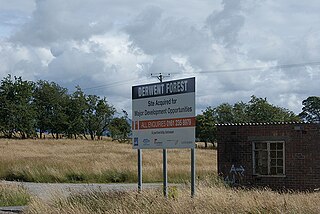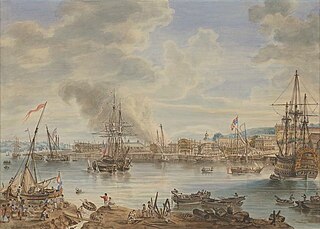 W
WThese are narrow-gauge railways at military establishments and former UK Government-owned explosives sites. These locations were often subject to the Official Secrets Act and other government restrictions, so many of them are less well documented.
 W
WThe Bicester Military Railway (BMR) is a railway in Oxfordshire, England belonging to the Ministry of Defence. It links military depots at Piddington, Arncott and Graven Hill with the Oxford to Bicester Line.
 W
WFort Borstal was built as an afterthought from the 1859 Royal Commission on the Defence of the United Kingdom, by convict labour. Construction started in 1875 but was suspended in 1885. The fort was completed around 1895. it was one of a series of four forts that ringed Chatham.
 W
WRNAD Broughton Moor is a decommissioned Royal Naval Armaments Depot located between Great Broughton and Broughton Moor in the County of Cumbria, England.
 W
WChatham Dockyard was a Royal Navy Dockyard located on the River Medway in Kent. Established in Chatham in the mid-16th century, the dockyard subsequently expanded into neighbouring Gillingham.
 W
WDinton railway station is a disused railway station which formerly served Dinton in Wiltshire, England. It was situated on the West of England Main Line from London Waterloo station to Exeter. It was opened in 1859 and closed to passengers in 1966 and to general goods traffic in 1967. In the First World War, it was the junction for the Fovant Military Railway. The station was about ½ mile from the centre of the village.
 W
WThe Longmoor Military Railway (LMR) was a British military railway in Hampshire, built by the Royal Engineers from 1903 in order to train soldiers on railway construction and operations. The railway ceased operation on 31 October 1969.
 W
WFort Luton was built between 1876 and 1892 south of Chatham, Medway, South East England. It is one of the five late Victorian land front forts built to defend the overland approaches to Chatham. It is the smallest of the Chatham forts and was built near to the village of Luton.
 W
WLydd Ranges is a military firing range south of Lydd, in Kent, England, extending as far as the south coast.
 W
WThe Melbourne Line was a railway line which ran from Derby to Ashby de la Zouch. It was used by the British Army and Allied engineers during the Second World War from 1939 until late 1944 to prepare them for the invasion of mainland Europe. Engineers practised the demolition and rebuilding of railways and the running and maintenance of a railway line and its rolling stock. There was also a bridge building school at Kings Newton.
 W
WDefence Munitions (DM) Kineton occupies the site officially known as MOD Kineton, and is a Ministry of Defence property located close to the village of Kineton, Warwickshire, England.
 W
WThe Railway Operating Division (ROD) was a division of the Royal Engineers formed in 1915 to operate railways in the many theatres of the First World War. It was largely composed of railway employees and operated both standard gauge and narrow gauge railways.
 W
WThe Rowtor Target Railway was a military narrow gauge target railway south of Okehampton in Dartmoor, England with a gauge of 24 inches (610 mm).
 W
WThe Royal Arsenal Railway was a private military railway which operated inside the Royal Arsenal, Woolwich, southeast London.
 W
WThe Shropshire & Montgomeryshire Light Railway was a railway running from Shrewsbury, England to Llanymynech, Wales, with a branch to Criggion. The line was taken over by the War Department in 1941, and extensively reconstructed to serve Central Ammunition Depot Nesscliffe. It was finally closed in 1960.
 W
WThe Spurn Point Military Railway was a railway line in the East Riding of Yorkshire, England. It extended for 3 3⁄4 miles (6 km), connecting Kilnsea with Spurn Point in the Humber Estuary. The line was built to supply military installations along this stretch of coast.